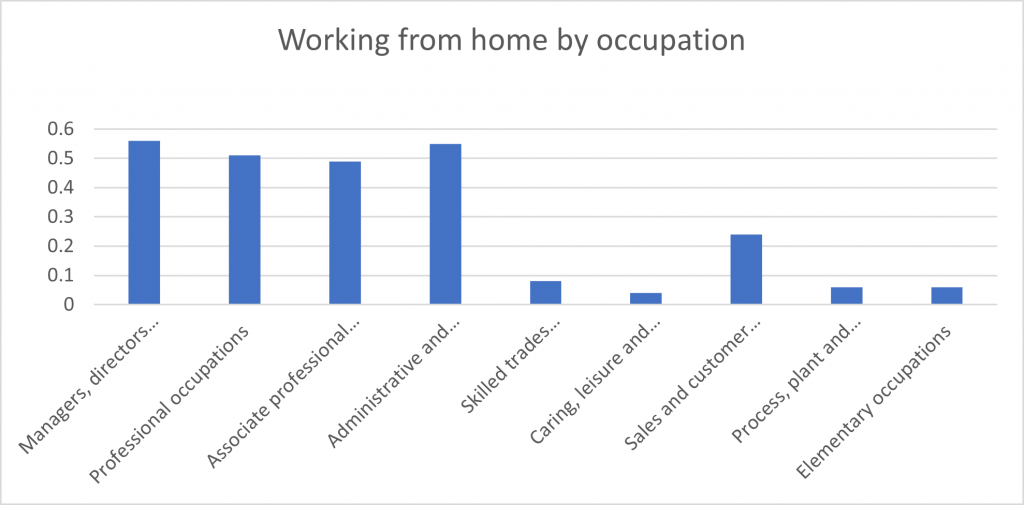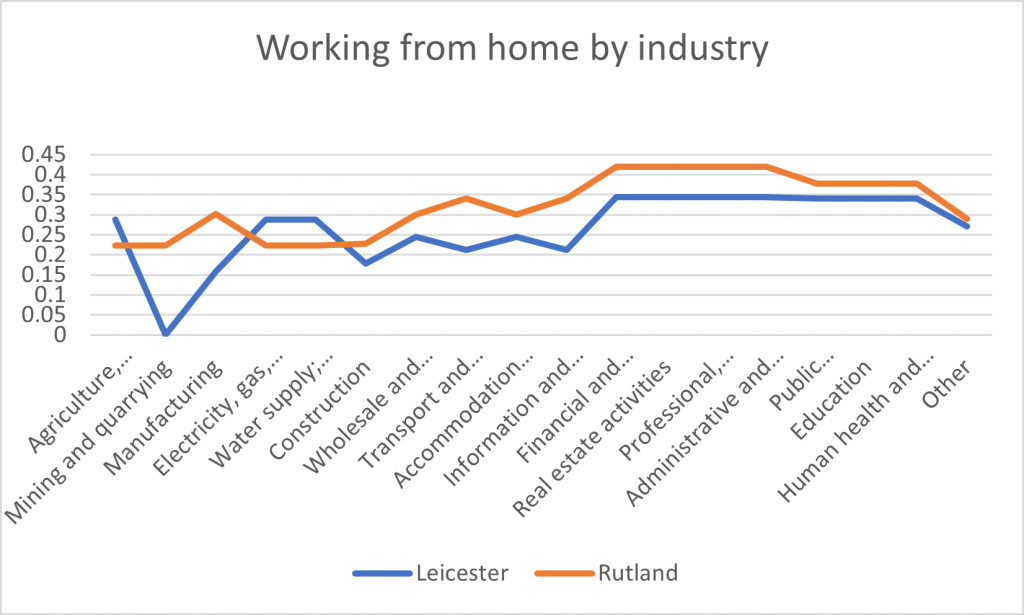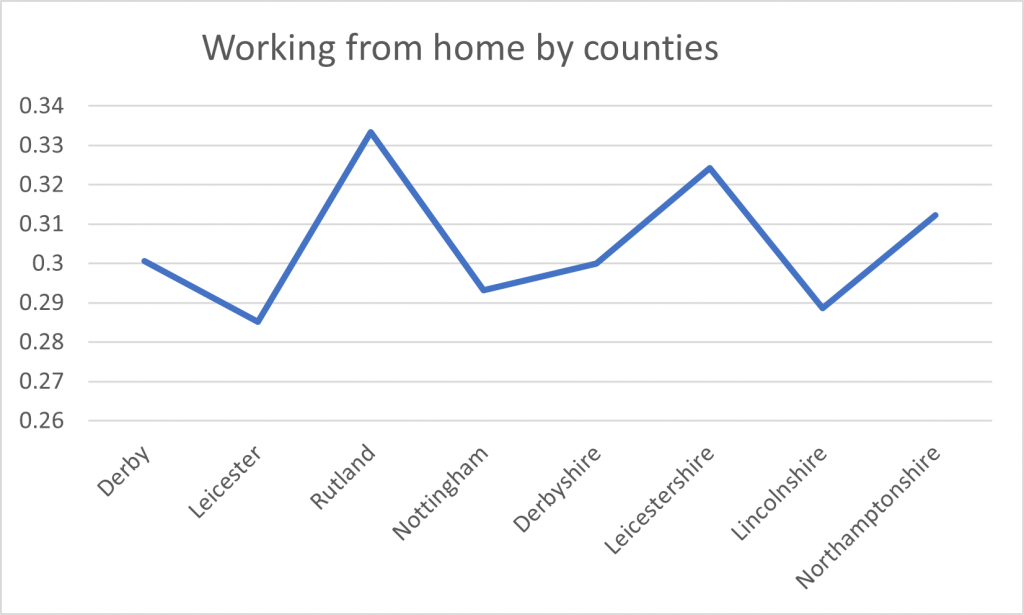Tuan Luong
- Working from home by occupation:
A key feature in current and probably future labour market is the fact that employees are forced or encouraged to work from home if possible. It raises the question of how feasible that we perform our tasks at home.
Not all jobs can be done at home. Key workers cannot perform their duties while at home. Even those who are not considered to be key workers, such as waiters/waitresses, builders or plumbers will have to be on site.
Based on the survey “Understanding Society” when respondents were asked if working from home on a regular basis would be possible, the Resolution Foundation estimated the probability of working from home across occupation, as shown in Figure 1. The occupations that are likely to work from home are high-skilled, such as managerial and professionals. On average, a typical person has a 30 percent chance to be able to work from home. This is consistent with the estimations from the Office for National Statistics. Indeed, in their “Coronavirus and the social impacts on Great Britain” survey, the proportion of people who worked from home varied from 27 percent in September 2020 to 50 percent in April 2020. Another survey, “Decision Maker Panel”, by the Bank of England, the University of Nottingham and Stanford University indicates that the proportion of people who worked from home was 37 percent.
Figure 1: The probability of working from home by occupation

- Where do people can work from home?
The probability to work from home is location-dependent. Figure 2 shows that people in Leicester have a low probability of working from home. It is predicted that only 29 percent of residents in the city can work from home. On the other hand, about a third of people in Rutland is expected to work from home.
Leicester: Manufacturing, Wholesale and retail trade; repair of motor vehicles and motorcycles, Education, Health care and Social work activities.
Figure 2: Working from home by counties
How can we explain this result? Looking at the data provides us two explanations. First, employment in the city is heavily skewed towards industries such as Manufacturing; Wholesale and retail trade; repair of motor vehicles and motorcycles; Health care and social work activities. Employees in these sectors are less likely to be able to work from home. The distribution of sectors in Rutland is, however, less skewed towards these sectors. Second, even within the same industry, the probability of working from home in Leicester is relatively lower than that in Rutland, as shown in Figure 3. This is because high-skilled employees such as managers and professionals are likely to live away from the city centre.
Figure 3: Working from home by industry

- What lesson can be taken from here?
Working from home would reduce social contacts and prevent the spread of the transmission. It is not surprising that while Leicester had the highest number of cases with more than 8000 cases per month last year, Rutland recorded the lowest number of cases with less than 300 cases per month during the same period. Although we might expect our life back to normality at the end of the pandemic, working from home could be the future of our work life as the virus is expected to stay with us at least in the foreseeable future. Policies need to be taken to support people in the occupations, industries and regions where working from home is currently not feasible.


